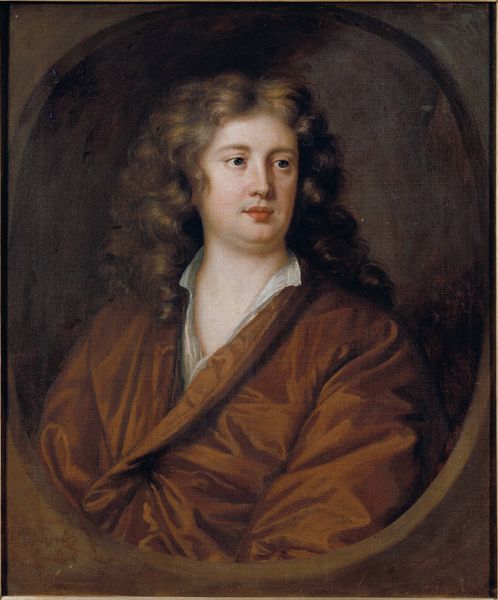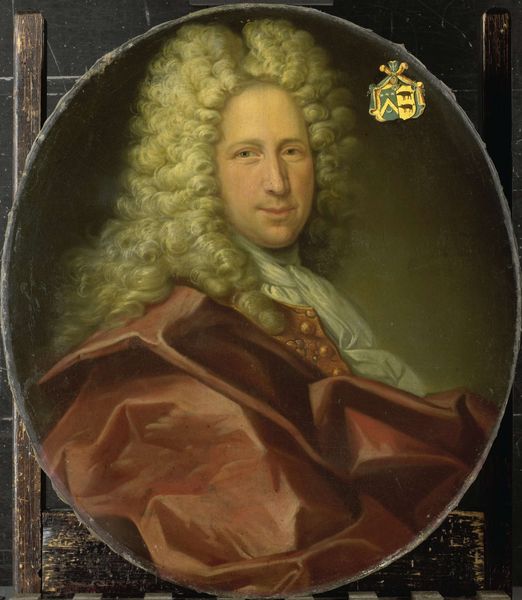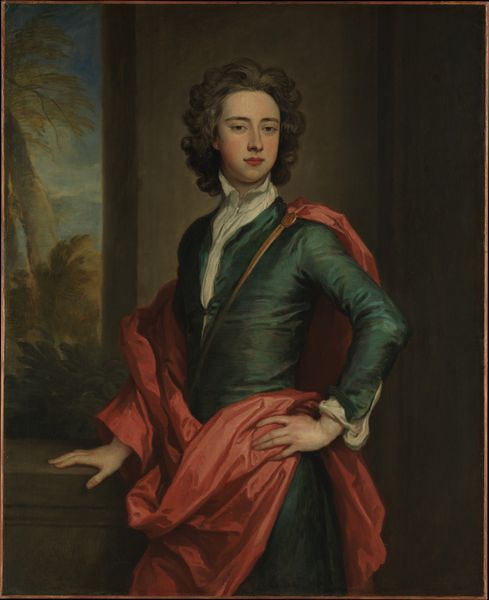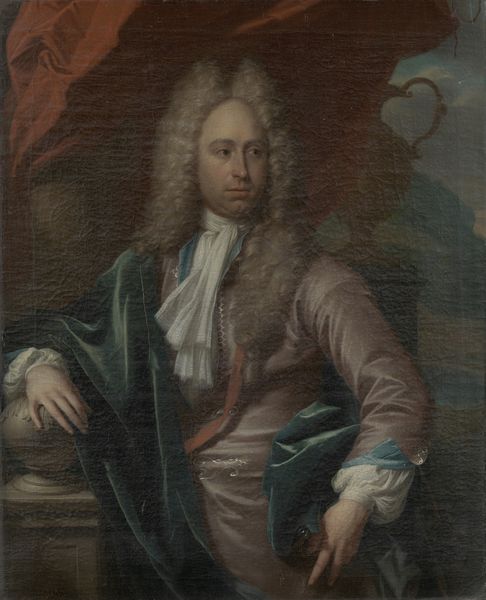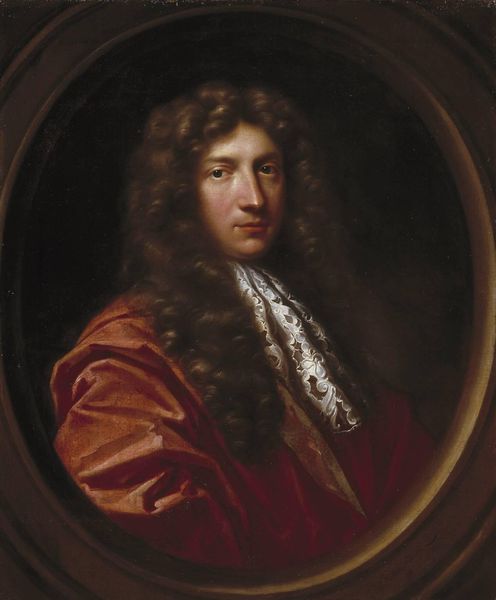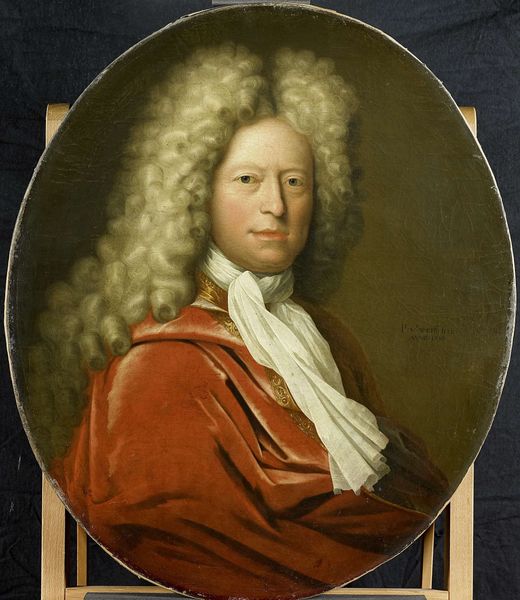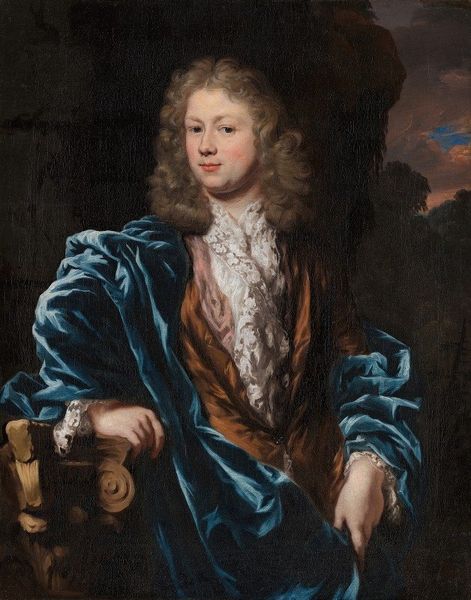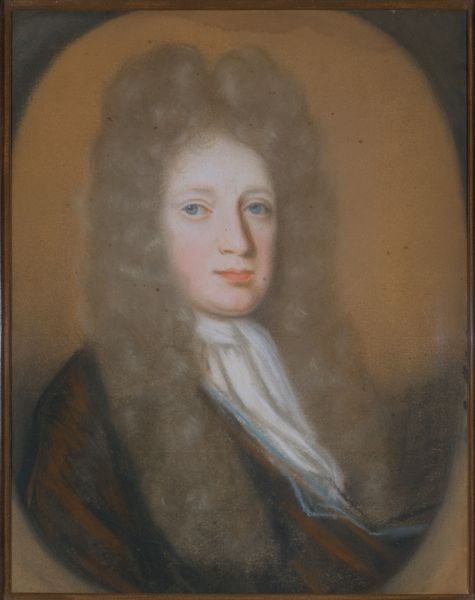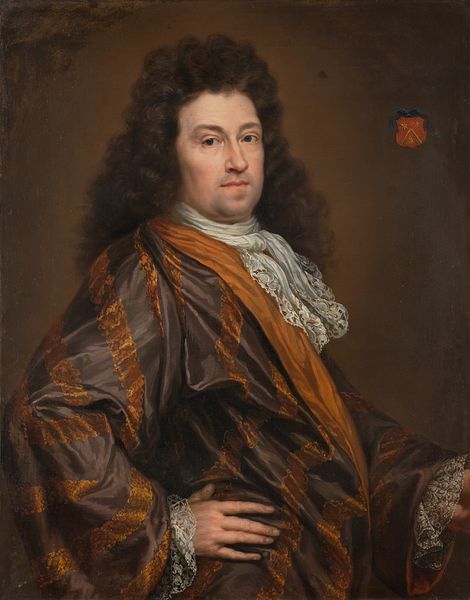
painting, oil-paint
#
portrait
#
self-portrait
#
baroque
#
painting
#
oil-paint
Dimensions: height 85 cm, width 69 cm, depth 8.5 cm
Copyright: Rijks Museum: Open Domain
Editor: Here we have Hendrik van Limborch’s "Self-Portrait," created in 1708 using oil paint. The soft lighting and the subject’s gaze give it a very intimate feel. What’s your perspective on this Baroque self-portrait? Curator: This piece provides an interesting window into the construction of artistic identity in the early 18th century. Consider the theatrical drapery, the elaborate wig. This wasn't merely a likeness; it was a performance, signaling Limborch’s status and sophistication within specific artistic circles and potential patronage networks. What do you notice about his hand? Editor: It seems carefully posed, almost as if to emphasize elegance. It looks studied, like he’s very aware he's being watched, and wants to signal status and taste. Curator: Exactly! That deliberate hand gesture, paired with his refined features, connects to wider questions about how artists at that time portrayed themselves for a public audience, which portraits of intellectuals and nobility were they familiar with? What expectations were there of this particular format? Editor: So, the image is about crafting an identity for the viewer, playing with the social expectations of artists at the time. It makes you think about what this says about artists’ place in society, right? Curator: Precisely. And how artists strategically leveraged portraiture to enhance their position and secure future commissions within those socio-political structures. Editor: I hadn’t really considered the public dimension of even a "self" portrait before. Thanks for making me see that it goes beyond just an image of the painter themselves! Curator: My pleasure! Analyzing through the lens of its historical and cultural placement opens up many layers of understanding, indeed!
Comments
No comments
Be the first to comment and join the conversation on the ultimate creative platform.

